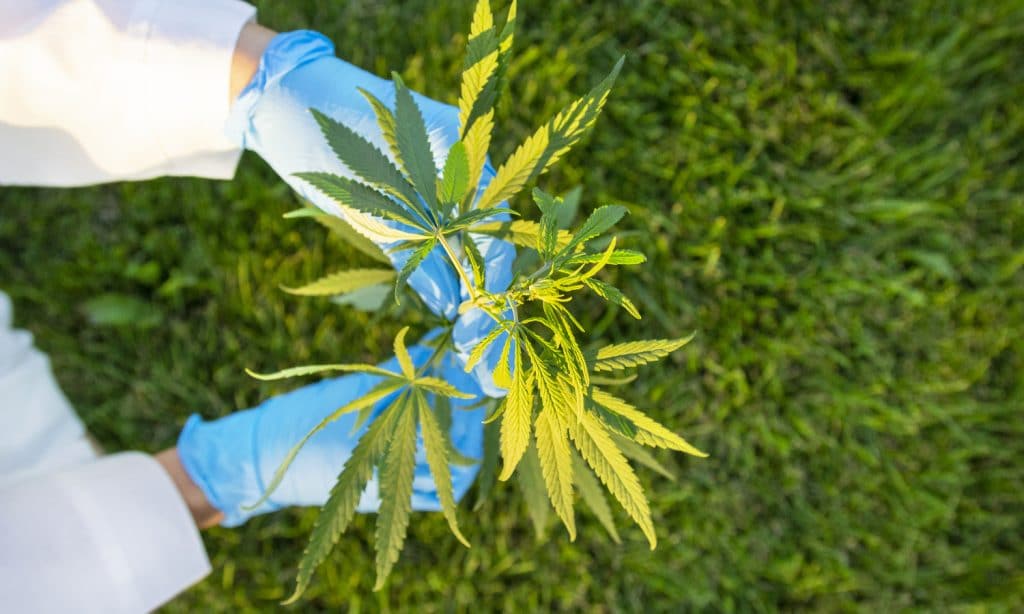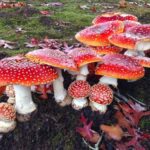What is Delta-8 THC?
Delta-8 tetrahydrocannabinol (“delta-8 THC” or “Δ8THC”) is one of over one-hundred cannabinoids in the cannabis plant and it occurs in extremely small concentrations. According to the National Cancer Institute, delta-8 THC is defined as
[a]n analogue of tetrahydrocannabinol (THC) with antiemetic, anxiolytic, appetite-stimulating, analgesic, and neuroprotective properties. Delta-8-tetrahydrocannabinol (delta-8-THC) binds to the cannabinoid G-protein coupled receptor CB1, located in the central nervous system . . . [and] [t]his agent exhibits a lower psychotropic potency than delta-9-tetrahydrocannabinol (delta-9-THC), the primary form of THC found in cannabis.
Δ8THC and Δ9THC are both psychoactive, but Δ9THC is slightly more psychoactive as “comparing the strength of delta-8 THC to delta-9 THC in terms of potency would give you a 2-3 ratio.” In addition to its lower “psychotropic potency” (the “high” feeling associated with cannabis), Δ8THC is organically different from Δ9THC.
The “delta” part of the name of these cannabinoids refers to a double bond, which is a type of chemical bonding between two atoms of a molecule involving four bonding electrons as opposed to two in a single bond. The respective “8” and “9” of these cannabinoids refers to the location of the double [delta] bond on their molecular, carbon chains; the Δ8THC bond being located on the eighth carbon chain, and the Δ9THC bond being located on the ninth carbon chain. Although this difference seems subtle, it has noticeable effects on how the body’s endocannabinoid receptors bind, which might explain why Δ8THC, as compared to Δ9THC, reportedly has less psychotropic potency and clearer highs with reduced anxiety and a greater ability to concentrate.
Potential Benefits of Delta-8 THC
Since Δ8THC occurs in the cannabis plant in small concentrations, commercial growers and extractors typically use selective breeding and molecular isolation to access greater amounts of Δ8THC because of its unique properties and therapeutic potential.
A 2018 preclinical study published in the U.S. National Library of Medicine, focusing on cannabis and cannabinoid research, found that Δ8THC might help reduce pain and inflammation in corneal injury in mice. Additionally, the research indicated that when Δ8THC is applied topically, pain sensitivity and inflammation are reduced through its effects on CB1 receptors. Other publications in the U.S. National Library of Medicine explain how, similar to Δ9THC, Δ8THC exhibits anxiety-reducing qualities.
A 2004 study published in “Pharmacology, Biochemistry and Behavior,” which can also be found in the U.S. National Library of Medicine, explained that a low amount of Δ8THC administered to mice seemed to stimulate appetite. The study showed that over nine days, the daily food consumption of the Δ8THC-treated mice increased by 16 percent, and that over 50 days, it increased by 22 percent. The research also demonstrated that Δ8THC increased food intake significantly more than Δ9THC. Thus, low doses of Δ8THC might provide beneficial solutions to the treatment of certain weight disorders. Lastly, this study showed that cognitive function had a tendency to improve in the Δ8THC-treated mice.
A 1995 Israeli study published in “Life Sciences” focused on the effects of the administration of Δ8THC to eight children between the ages of 3-13 with various hematologic (blood-related) cancers. The two-year study found that vomiting was completely prevented when the patients ingested Δ8THC two hours before chemotherapy and every six hours for 24 hours after treatment, and that the side effects were negligible. By the time the research was published, the study’s authors reported that there were 480 cases of successful treatments with Δ8THC.
Is Delta-8 THC Legal?
On December 20, 2018, the Agriculture Improvement Act of 2018, commonly known as the 2018 Farm Bill, was signed into law, which removed “hemp” from the Controlled Substances Act’s (“CSA”) definition of “marihuana” and exempted “tetrahydrocannabinols in hemp” from the scheduling of THC.
Under the 2018 Farm Bill, “hemp” is defined as
the plant Cannabis sativa L. and any part of that plant, including the seeds thereof and all derivatives, extracts, cannabinoids, isomers, acids, salts, and salts of isomers, whether growing or not, with a delta-9 THC concentration of not more than 0.3 percent on a dry weight basis.
7 U.S.C. § 1639o. This language, which expanded the 2014 Farm Bill’s definition of industrial hemp, was mostly included to clarify the status of popular cannabinoids derived from hemp, such as cannabidiol (“CBD”). Therefore, Δ8THC naturally occurring in a hemp plant having less than 0.3% Δ9THC concentration is legal under the 2018 Farm Bill.
However, producing viable commercial quantities of Δ8THC generally involves the conversion of CBD. Though CBD can certainly be present in the hemp plant in quantifiable measurements, the resultant converted Δ8THC is not naturally present: it was created through conversion of CBD. Note that the CSA schedules all “[t]etrahydrocannabinols, except for tetrahydrocannabinols in hemp” as controlled substances. 21 U.S.C. § 812(c)(17). The plain language of the CSA seems to indicate that any THC in hemp is exempted.
However, when you convert a naturally occurring cannabinoid (CBD) in hemp to a quantifiable amount of Δ8THC, is the resultant substance exempted from the CSA? The answer is far from settled. The 2018 Farm Bill expressly permits “all derivatives” and “extracts” from the hemp plant; however, those words are not defined in the 2018 Farm Bill. One could certainly argue that through the conversion of CBD, Δ8THC is a “derivative” of hemp. While it is true that the 2018 Farm Bill only contains a threshold level for Δ9THC and not Δ8THC, there is no question that Congress certainly did not intend for an analog of Δ9THC to be sold commercially at levels that a consumer could use for psychoactive effects. There is also an argument that the limitation inherent in the term “hemp” in the CSA’s exemption of THC in hemp specifically relates to Δ9THC. It is likely that Congress will have to act to clarify this matter as Δ8THC becomes a more prevalent market cannabinoid.
Conclusion
Δ8THC is gaining popularity as more research is conducted showing its potentially therapeutic effects. Based on the studies mentioned above, Δ8THC, at a minimum, may help in alleviating pain and inflammation, decreasing anxiety, stimulating appetite, improving cognitive function, and reducing nausea.
Paul Stevenson is an associate attorney with Ritter Spencer Cheng PLLC based in the Dallas office, who represents all sectors of the hemp industry, including manufacturers, distributors, and retailers of hemp products. As cannabis and hemp lawyers, the lawyers at Ritter Spencer Cheng are prepared to advise your hemp or cannabis business in all facets of the industry, including formation and transactional issues and in cannabis litigation. Contact Ritter Spencer Cheng or give us a call at 214.205.5070 for more information.
- https://www.cancer.gov/publications/dictionaries/cancer-drug/def/delta-8-tetrahydrocannabinol?redirect=true
- https://leafist.com/news/science-tech/delta-8-thc-vs-delta-9
- See https://www.dictionary.com/browse/double-bond>https://www.dictionary.com/browse/double-bond
- See https://weedmaps.com/learn/dictionary/delta-8-tetrahydrocannabinol/
- See id.
- See https://pubmed.ncbi.nlm.nih.gov/29450258/.
- See id.
- Available at https://pubchem.ncbi.nlm.nih.gov/compound/delta8-THC#section=Biological-Test-Results.
- Available at https://pubmed.ncbi.nlm.nih.gov/15099912/
- See id.
- See id.
- See id.
- See id.
- Available at https://www.sciencedirect.com/science/article/abs/pii/002432059500194B?via%3Dihub
- See id.
- See id.
- See 21 U.S.C § 802(16); see also 21 USC § 812(c)(17).








